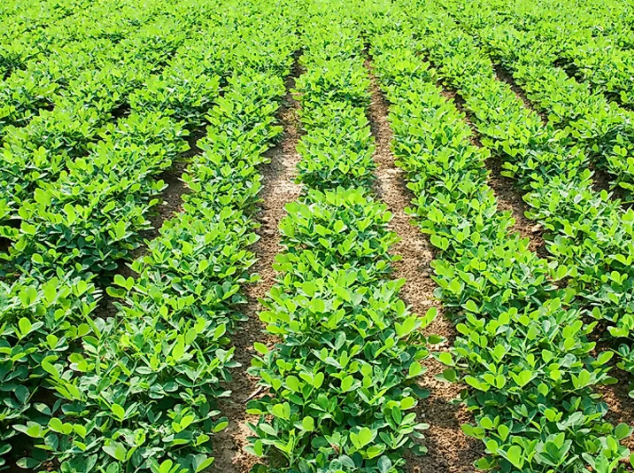Growing Peanuts
How Do Peanuts Grow? Try growing peanuts in your garden to grow something genuinely unique. I used to do that a few years back. Although the harvest was poor, I learned a lot about this bean.
In case you overlooked, Peanuts are grown underground in the vegetable garden rather than on trees.
Peanuts should be cultivated in well-drained soil. It’s critical to have good drainage. A pH of 5.8 to 6.2 should be achieved in the soil. Avoid over-liming, which will lead the plants to become stunted and their leaves to become yellow.
If a soil test reveals that fertilizer is required, apply 15-20 lbs. of 0-10-20 or its equivalent per 1,000 square feet before planting.
Potash should not be applied so close to maturing nuts. The pods will deteriorate before they can be harvested because of this.
Because peanut plants are legumes (capable of producing their nitrogen), they should be infected with an inoculant soon before planting or fertilized with a 3-5 percent nitrogen fertilizer.
How Do Peanuts Grow And Peanuts Planting
There are several commercially accessible types. Seeds will be available in several seed catalogs. Except for NC5, which grows more upright and produces peanuts in a clump around the taproot, they’re all runners.
Peanuts should not be over-watered. The taproot develops down to the soil water level in most cases. Peanuts are drought resistant. Plants that take too much water are susceptible to inflammation and insect attack.
Shelled seeds should be planted in rows 30 to 36 inches apart. The seeds should be spaced 4-6 inches apart in the row and planted at a depth of 1 to 1 inch in well-prepared soil.
Plant just once the earth has warmed up to 65 degrees in the spring. This often occurs during the first week of June in most locations.
Peanuts and Pests
Plants will be attacked by thrips and other insects soon after they emerge. Dust with Carbaryl (Sevin) dust as needed to cover the leaves lightly.
Around July 1, black patches will form on the leaflets’ surface. Leaf spot is a fungus infection that affects plants. Apply dusting sulfur or other commercially available dust or sprays for leaf spot control every 10-14 days.
This will have to be carried out by the end of September. Start dusting the first week of July, whether or not spots are evident.
Apply 15-20 lbs. of gypsum per 1,000 square feet straight over the row (around July 15). Peanuts have a growth season of roughly 150 days. During the first 10-15 days of November, the peanuts should be fully grown.
Peanuts must be covered for frost protection in the fall to have enough growing days. A round pointed spade can dig individual plants successfully. Cut the taproot with the spade pushed far beneath the plant. Remove soil from around the plant by loosening it.
Remove any soil from the nuts and invert (nuts-up) in the sun for 7-10 days, or until the nuts rattle in the shell.
About 10 pounds of dry, unshelled nuts will be produced per 100 feet of row. The nuts will mature if we have a long, warm fall. Even if the season only lasts a few weeks, you’ll have the unusual peanut plant in your garden.
Types Of Pest
A healthy tree can tolerate small numbers of aphids. Large populations can deplete a tree’s energy. Chemical eradication should begin as soon as possible following egg hatch. Nymphs seek refuge in new leaf clusters after hatching and are difficult to reach with pesticides.
Mites are closely linked to insects, although they are not actual insects. In this part of the country, the European red mite is the species that causes the most damage to trees.
This mite’s overwintering eggs are even smaller than aphid eggs (.14 mm) and impossible to spot without a hand lens. When enormous populations are present, millions of eggs adhere to the bases of buds and spurs like red dust.
Aphid eggs hatch slightly later than mite eggs. Young mites develop into adults after hatching and then lay more eggs, increasing their number. When mite numbers are high, the chlorophyll in leaves is stripped away, giving them a bronzed look.
A tree can endure sparse populations of these pests in the same way it can withstand aphids. The severity of the mite population must be determined. Chemical control techniques should be conducted if there is a significant population.
If mite populations are maintained under control early in the year, predators will frequently migrate in later to control them.
As a result, choose a pesticide that will kill the mites while being low in toxicity to the predators.


























